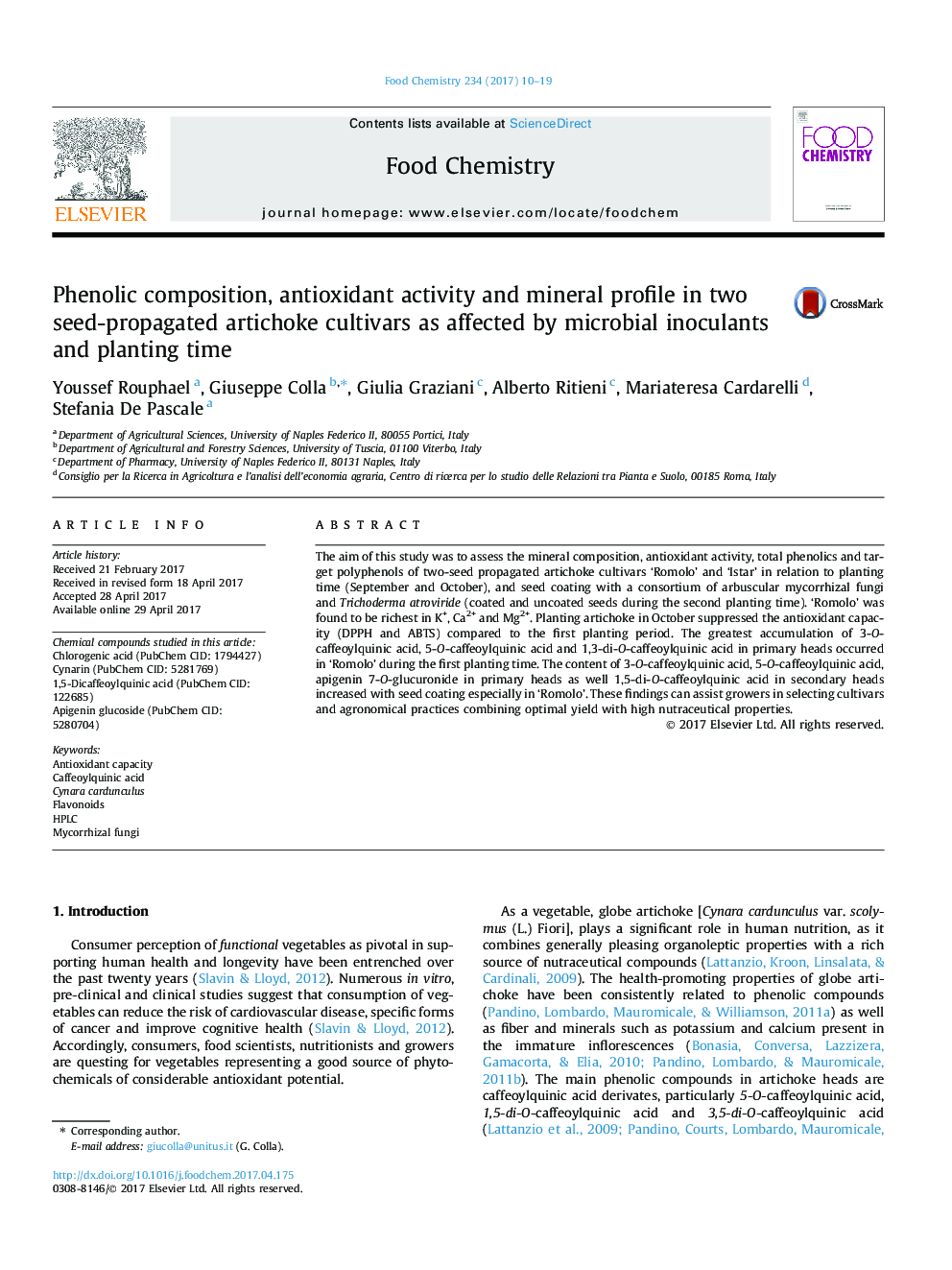| Article ID | Journal | Published Year | Pages | File Type |
|---|---|---|---|---|
| 5133109 | Food Chemistry | 2017 | 10 Pages |
â¢We examined the effects of cultivars, planting time and microbial inoculants on artichoke quality.â¢Among cultivars 'Romolo' had outstanding nutritive value.â¢Planting artichoke in September improved its quality and health benefits.â¢Caffeoylquinic acid and flavonoids incurred significant increase with seed coating.
The aim of this study was to assess the mineral composition, antioxidant activity, total phenolics and target polyphenols of two-seed propagated artichoke cultivars 'Romolo' and 'Istar' in relation to planting time (September and October), and seed coating with a consortium of arbuscular mycorrhizal fungi and Trichoderma atroviride (coated and uncoated seeds during the second planting time). 'Romolo' was found to be richest in K+, Ca2+ and Mg2+. Planting artichoke in October suppressed the antioxidant capacity (DPPH and ABTS) compared to the first planting period. The greatest accumulation of 3-O-caffeoylquinic acid, 5-O-caffeoylquinic acid and 1,3-di-O-caffeoylquinic acid in primary heads occurred in 'Romolo' during the first planting time. The content of 3-O-caffeoylquinic acid, 5-O-caffeoylquinic acid, apigenin 7-O-glucuronide in primary heads as well 1,5-di-O-caffeoylquinic acid in secondary heads increased with seed coating especially in 'Romolo'. These findings can assist growers in selecting cultivars and agronomical practices combining optimal yield with high nutraceutical properties.
